With all due respect to the other seasons, there isn’t a more exciting time of year for wilderness exploration and photography than fall, and there’s no better place to be this time of year than the Eastern United States. Blessed with a variety of hardwood species like sugar maple and birch that turn practically every shade of color imaginable during the autumn season, there’s no shortage of fantastic foliage destinations in this part of the country. That said, there are some locations that stand out from the rest, such as the Heart Lake area in New York’s Adirondack Mountains.
Located south of Lake Placid in the High Peaks Region, Heart Lake is a perfect fall hiking and photography destination. While the main sights can be seen in just a daytrip, to truly appreciate this special area, nothing beats spending a few nights in a classic Adirondack lean-to, several of which pepper the lakeshore and surrounding forest. Or if camping isn’t your style, the charming and cozy Adirondack Loj is also near the lake and offers the weary hiker heated rooms and home-cooked meals.
Another big advantage of staying at Heart Lake is that some of the best fall photography imaginable is right at your doorstep. The following tips will help you make the most of a fall trip to Heart Lake and to take your fall photos to the next level. While this article is focused on the Heart Lake area, most of the photography tips can be applied to any locale.
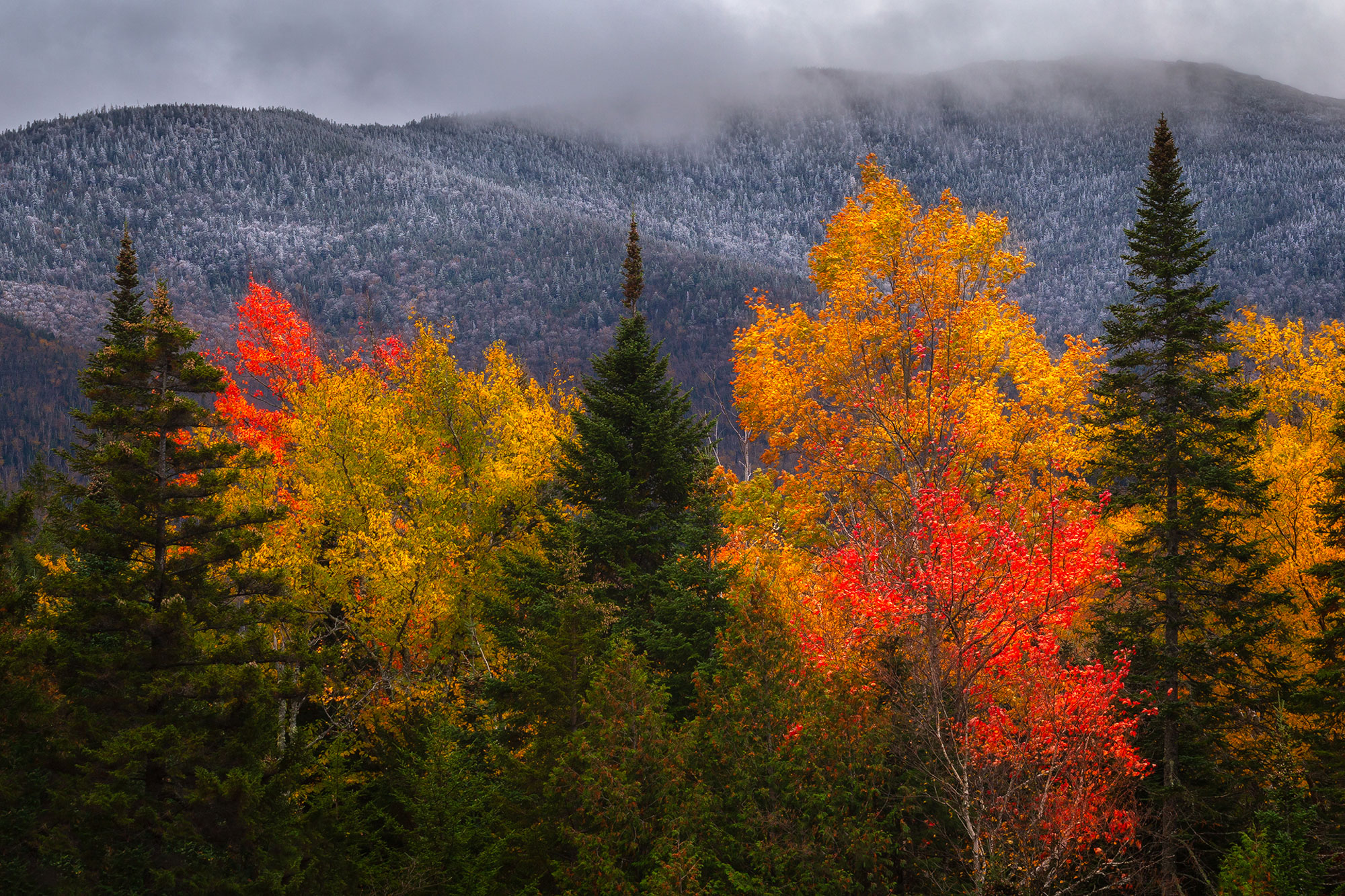
Time it Right
The first consideration when planning a fall photography trip to Heart Lake or elsewhere is timing. While difficult to predict and variable from year to year, peak fall foliage in this part of New York typically arrives in the last week of September and lasts through the first week of October. Peak fall color at Heart Lake the past two years has been right around October 5th. Once September arrives and preparation for fall kicks into high gear, the Adirondack Mountain Club posts a weekly Heart Lake foliage report on their social media pages that is an incredibly useful resource for monitoring the color progression remotely. If looking to explore other areas in the Adirondacks or New York State, I Love New York posts a weekly foliage report for the entire state on their website and social media pages.
Even if you miss peak color, there can be advantages to being a little on the early or late side. In the days leading up to peak color, the prominence of some trees with green leaves that have yet to change color can make the ones that have changed pop even more. Post-peak when the leaves begin to fall is a great opportunity to experiment with detailed macro shots of freshly fallen leaves and can provide the opportunity to catch the first snow of the season as autumn color hangs on before succumbing to the white of winter.
Scout It Out
One of the best ways to get to know an area and to take the best photos possible is to get out and explore and scout out different compositions upon arrival, especially if never having been to the location before. Spending at least a couple days in an area is also advantageous as it provides more time to study weather patterns and to get a better understanding of how the light interacts with the landscape at different times of the day. Scouting is rather easy to do in the Heart Lake vicinity, but there are a few classic spots where photography is worthwhile:
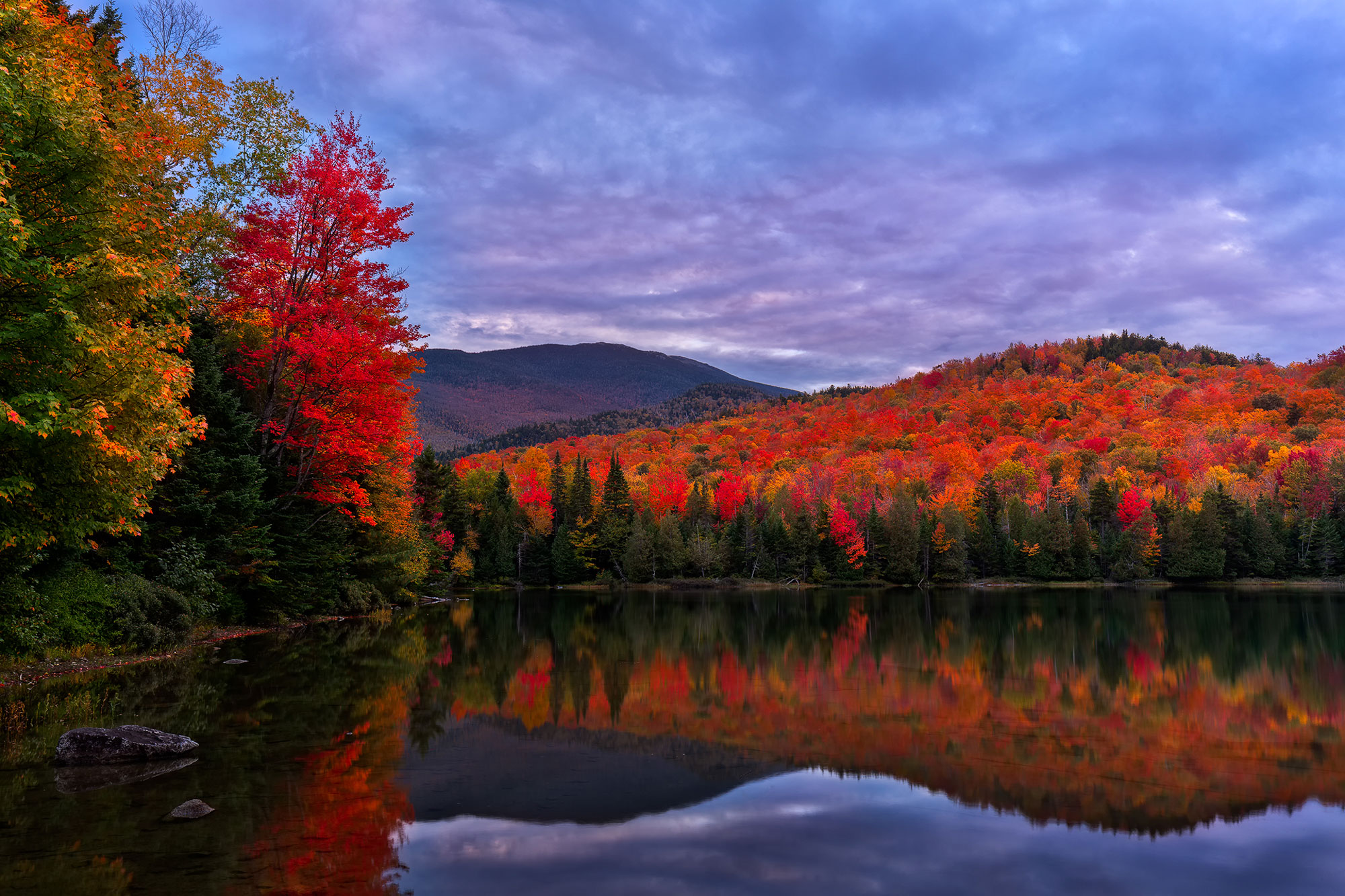
Heart Lake
The lake itself offers a bounty of photo opportunities, and a hiking trail leads around the eastern half of it and provides several access points to the lake. Even better, snag one of the lakefront lean-tos, which can be reserved up to a year in advance, and your own slice of private lakefront will be just steps away. A sandy beach on the north side of the lake is an excellent spot to photograph mountain reflections or a canoe beached on the sandy shore with a background of colorful foliage.
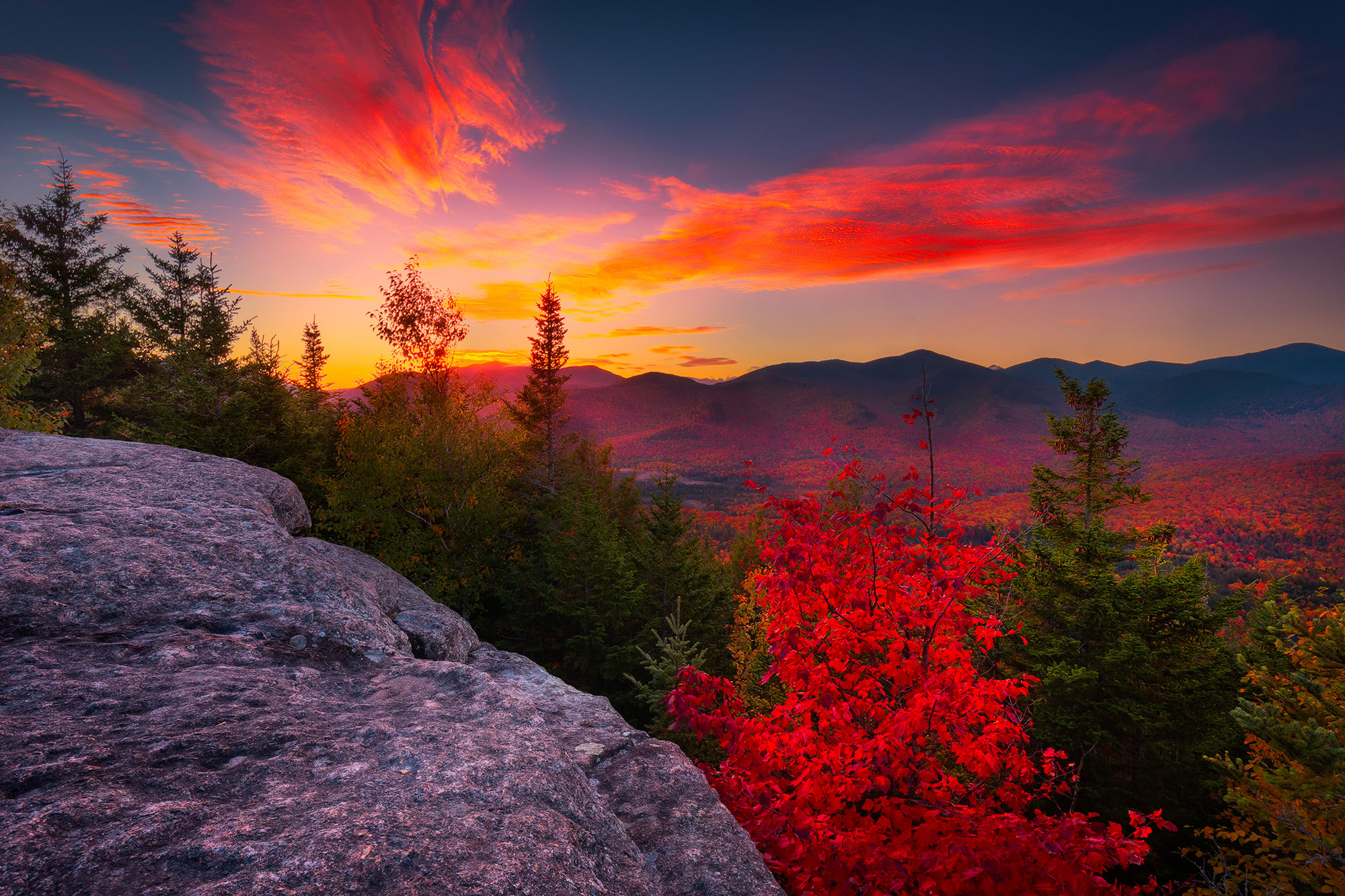
Mount Jo
Rising above the north shore of Heart Lake, 2,876-foot Mount Jo provides one of the most phenomenal fall views and is one of the best bang-for the-buck hikes in all the Adirondacks. A typical rugged and steep Adirondack trail leads from the campground to the rocky summit ledges. Partway up the Mount Jo trail, the trail forks into the 1.1-mile “Short” Trail and the 1.3-mile “Long” Trail, both of which ultimately meet below the summit after a 700-foot climb. It takes roughly 45 minutes to get to the top, where a glorious view of mountains and fall foliage spreads out below. The opportunities for landscape shots with a wide-angle lens are endless, and since the view looks to the south, great sidelight can be had at both sunrise and sunset. While views from the official summit are nice, some open ledges below the summit provide an even more panoramic view with a clear perspective of Heart Lake surrounded by colorful autumn foliage with Algonquin and other High Peaks rising from the valley further to the south.

Heart Lake Campground
Spending the night camping at Heart Lake opens up additional photo opportunities. Campers by a crackling fire and tents or lean-tos nestled in the forest are great additions to any fall photography portfolio and help to fully paint the picture of what fall in the mountains is all about. Lean-tos, tent campsites, and bunks in the Loj can be reserved onlineat the Adirondack Mountain Club’s. Lean-tos and tent sites cost $40 to $45 per night, and Loj rooms range from $70 to $160. For all Heart Lake accommodations, Adirondack Mountain Club members receive a 10% discount.

Mornings are Magic
As difficult as it can be to crawl out of a toasty sleeping bag to feel the cold slap of predawn air, there’s no better time of day for fall photography than early morning. Winds at Heart Lake are typically calmest at dawn, better facilitating the reflection of colorful foliage and clouds in the lake. Fog rising from the lake on crisp autumn mornings is a common occurrence and provides some of the most dreamy and mystical photography conditions imaginable, whether photographed from the shore of the lake itself or from a higher vantage point up on Mount Jo. On especially cold mornings, frost might even coat the flora, adding a special touch to an already extraordinary time of year.
Look Beyond the Grand Landscape
When color is at its peak, the most obvious way to capture the beauty is to use a wide-angle lens to capture grand landscape photos. To create a more diverse portfolio and to truly capture the full essence of fall, though, it’s important to look beyond the landscape and find the subtle beauty of fall. One of the best ways to do this is to use other lenses besides a wide-angle. Utilizing a telephoto lens is a great way to isolate smaller sections of a landscape, and it can be a fun exercise in creativity to start with photographing the landscape using a wide-angle lens and then switch over to a telephoto to pick out different compositions from within the wider shot. From the shore of Heart Lake, use a telephoto lens to create a frame-filling shot of the most colorful group of trees, or a lone red maple amid a group of evergreens. From the summit of Mount Jo, hone in on morning fog floating over the top of the forest canopy, or a canoe on Heart Lake dwarfed by the immense scale of the Adirondack wilderness.
On the opposite end of the spectrum from an expansive landscape photo, macro photography can reveal an intimate and abstract side of fall that often goes unnoticed. With macro photography, a small section of a single leaf can be as beautiful and profound as a grand vista filled with millions of leaves.
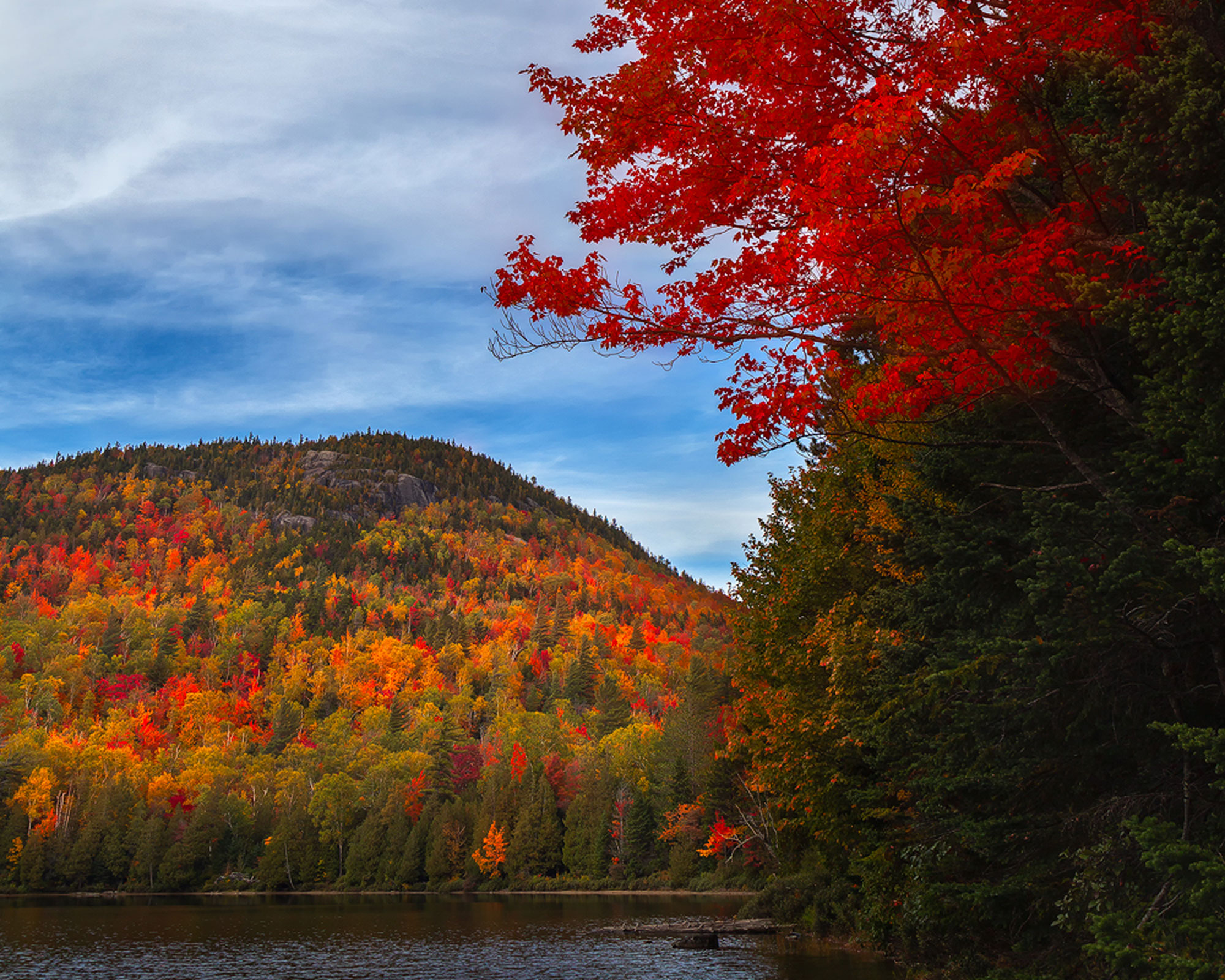
Pack a Tripod and Polarizer
Two of the most useful accessories for fall photography not only at Heart Lake but in general are a tripod and polarizing filter. Unless intentionally blurring some or all of a photo for creative reasons, it’s typically desirable for a photo to be in sharp focus from front to back. A tripod is often necessary to stabilize the camera and facilitate a sharp photo, especially at dawn and dusk when there’s less light and longer exposure times are required. A polarizer comes in handy throughout the year but is especially useful in fall. Much like the polarized sunglasses that you might own, putting a polarizing filter on a camera lens helps to decrease glare and haze. Using one helps to make fall colors really pop, especially when the leaves are wet. A polarizer also helps to deepen the color of a blue sky, although care should be taken not to overdo it and end up with an unnatural polarization gradient in the sky. To avoid this, twist the polarizer back and forth until the most pleasing effect is achieved, especially when photographing at a 90-degree angle to the sun, at which the polarization effect is most prominent.
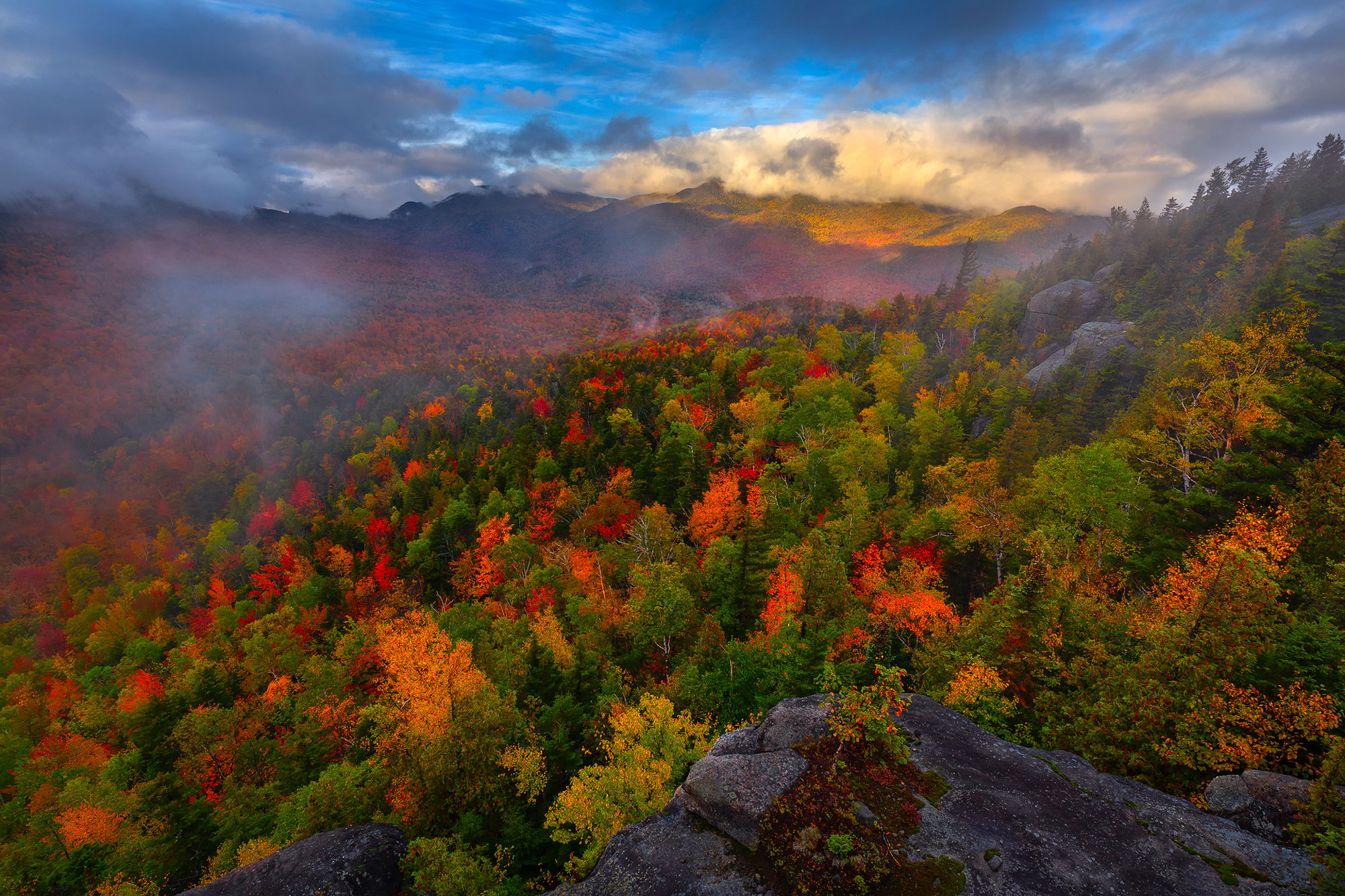
Get Out and Explore
While there are enough interesting photography subjects at Heart Lake to keep a photographer entertained for days on end, there are also several other nearby locations that can all be reached on foot that are worth investigating if on an extended stay in the area. About a mile up the road from the Heart Lake Campground, a trail to Mount Van Hoevenberg begins off South Meadows Road and leads to another short mountain with an open, rocky summit that provides a different perspective than Mount Jo. En-route to the summit, pass a beaver pond that provides an excellent view of Mount Van Hoevenberg to the north. For a less strenuous diversion from Heart Lake, continue to the end of South Meadows Road by foot or car to photograph pretty meadows complete with a babbling brook.
Heart Lake also provides easy access to hiking some of the most popular High Peaks, such as Algonquin, Marcy, and Phelps. It should be noted though that while the tundra of these peaks can sport pretty autumn alpine grasses, the best fall colors will be well below these lofty summits.
For a more secluded leg-stretcher than hitting a High Peak, loop around the north side of Heart Lake to connect with the Indian Pass Trail. Reach beautiful Rocky Falls in a little over two miles, with the option to continue on approximately three more miles to rugged and seldom-visited Indian Pass.
On the drive to and from Heart Lake on Adirondack Loj Road, several open meadows are passed that make for perfect photography or picnic spots, just be sure not to encroach on any private land.
Whether spending just an afternoon or an entire week, Heart Lake is a perfect destination for fall photography. With the tips outlined in this article and an open, creative mind, you’ll be sure to come away from your visit with the best fall photos possible.
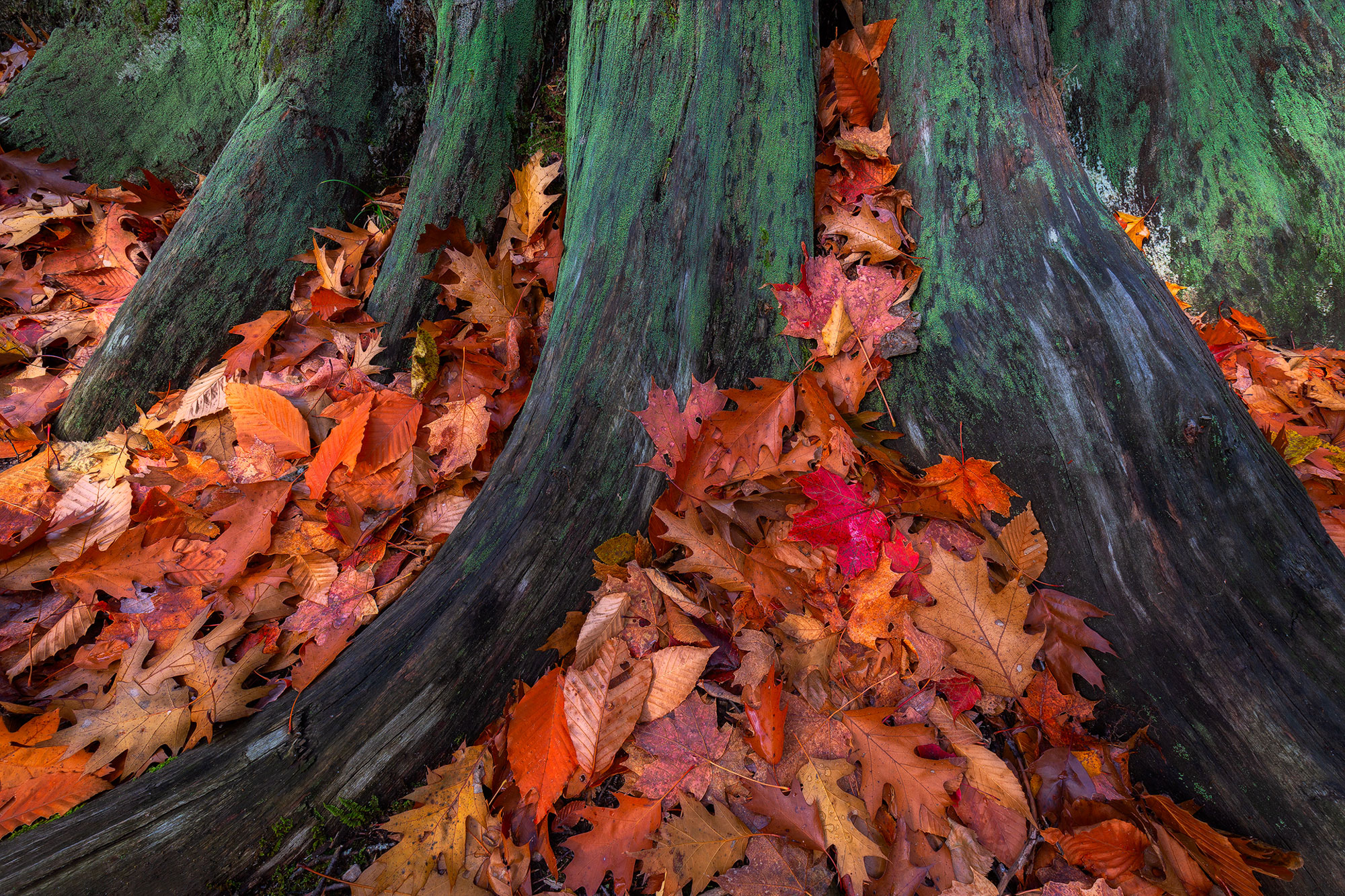
Joey Priola
Joey Priola is a scientist and wilderness photographer based out of Clifton Park, NY. He has a deep passion for exploring and photographing the wilderness, particularly the Adirondacks. While his love for the outdoors precedes his passion for photography, he now could not imagine having one without the other. Joey also greatly enjoys writing about his outdoor adventures, and one of the main goals he hopes to accomplish through his photography and stories is to inspire others to get outside and discover the same feelings of awe and wonder that the wilderness instills in him. More of his work can be found at his website and on Instagram.
Related Posts
April 12, 2024
Explore Like a Local: The Outdoor Mecca of North Conway, NH
There's a lot to love about this New…
April 3, 2024
5 Things To Do in the Boston Area During Mud Season
Adventure opportunities are abundant…
April 2, 2024
10 Tips for Mountain Biking Etiquette During Mud Season
One rough spring could ruin the…




